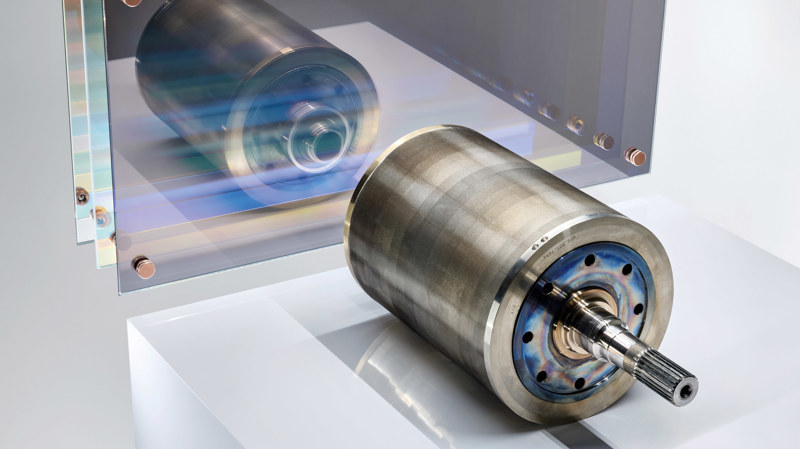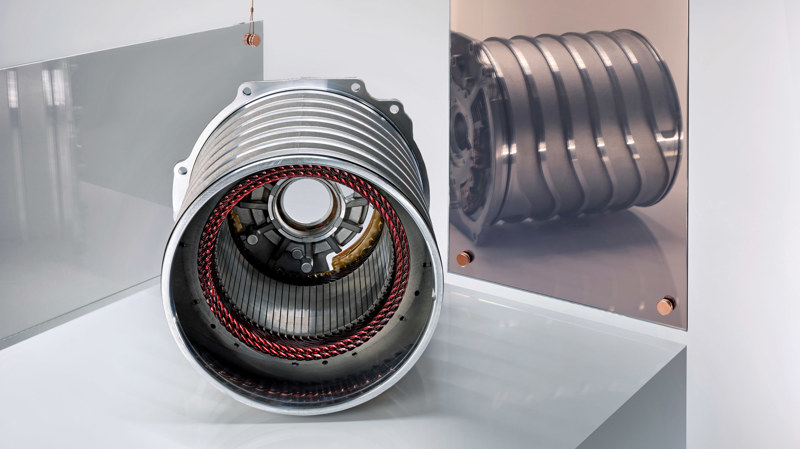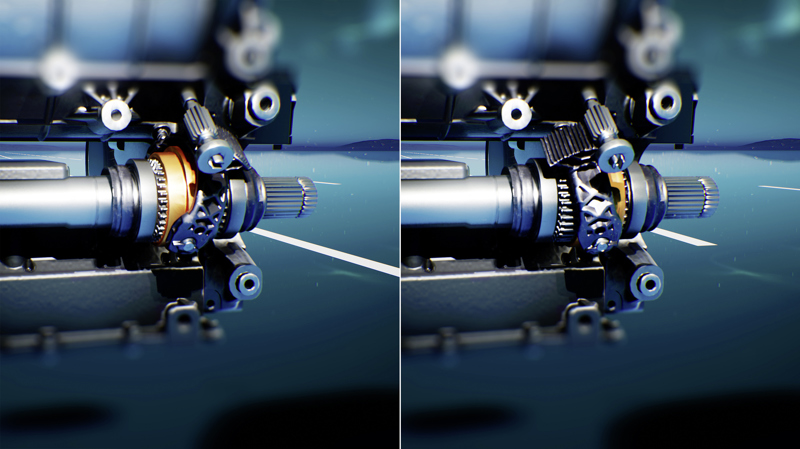Permanent Magnet Synchronous motors
A Permanent Magnet Synchronous Motor (PMSM) is an electric motor that uses permanent magnets on the rotor to generate a magnetic field that interacts with the stator winding to produce mechanical rotation. PMSMs are commonly used in various applications, including electric vehicles, industrial machinery, and appliances.
How does it work
Rotor: The rotor of a PMSM contains permanent magnets that generate a fixed magnetic field. The magnets are typically made of materials such as neodymium iron boron (NdFeB) or samarium cobalt (SmCo) that have high magnetic strength.
Porsche Taycan Rotor with permanent magnets
Typical the rotor has 6 or 8 magnetic poles.
Stator: The stator is the stationary part of the motor and consists of windings that are wound around the stator poles. These windings are usually made of copper and are supplied with alternating current (AC) to create a magnetic field that interacts with the rotor.
Porsche Taycan Stator
Commutation: The PMSM relies on electronic commutation to control the direction and speed of the motor. Sensors, such as Hall effect sensors or encoders, are used to detect the position of the rotor and provide feedback to the motor controller. Based on this feedback, the motor controller determines when and how to switch the stator windings on and off to create a rotating magnetic field that drives the rotor.
Synchronization: The magnetic field generated by the stator windings must be synchronized with the position of the rotor to achieve efficient and smooth operation. This is typically done by using a technique called field-oriented control (FOC) or vector control, which adjusts the amplitude and phase of the stator current to align it with the rotor position.
Torque production: As the rotating magnetic field generated by the stator interacts with the permanent magnets on the rotor, it exerts a torque on the rotor, causing it to rotate. The torque produced by the motor can be controlled by adjusting the amplitude and frequency of the stator current, which in turn determines the strength and speed of the rotating magnetic field.
Power supply: PMSMs require a power supply that can provide the appropriate AC voltage and frequency to the stator windings. This is typically achieved using an inverter, which converts a DC voltage from a power source, such as a battery or a power grid, into the required AC voltage and frequency for the motor.
In summary, a PMSM uses permanent magnets on the rotor, stator windings, electronic commutation, and synchronization techniques to generate a rotating magnetic field that drives the rotor and produces mechanical rotation. The torque and speed of the motor can be controlled by adjusting the amplitude and frequency of the stator current using an inverter and a motor controller.
Advantages
One of the main advantages of synchronous motors in EVs is their higher power density. Permanent magnets in the rotor of a synchronous motor provide a constant magnetic field, which allows for higher torque and power output compared to asynchronous motors of similar size. This makes synchronous motors particularly suitable for high-performance EVs that require rapid acceleration and high speeds.
Synchronous motors in EVs are also known for their precise and efficient control. They can be precisely controlled using advanced power electronics, such as motor controllers or inverters, which allow for optimized performance and improved energy management. This enables features such as torque vectoring, where the torque can be independently controlled for each wheel, improving traction and handling in various driving conditions.
Another advantage of synchronous motors is their ability to achieve high efficiency over a wide range of speeds and loads. This allows for efficient operation at both low and high speeds, which is particularly useful in EVs that require different levels of power and torque depending on driving conditions.
Limitations
Rare earth materials: PMSM require rare earth magnets, which can be expensive and have environmental implications in terms of mining and sustainability.
Drag when free rolling: When an electric vehicle (EV) is coasting or rolling without power, the electric motor can create a drag effect, which is often referred to as “motor drag” or “coasting drag”. This drag is caused by the electromagnetic forces within the motor, which can resist the motion of the rotor and create resistance against the vehicle’s movement.
In the case of permanent magnet motors, which have magnets in the rotor, can generate more drag when the motor is not powered. The magnets in the rotor create a fixed magnetic field, which can create additional resistance to the rotor’s motion, resulting in higher motor drag compared to induction motors. However, the drag from the permanent magnet motor can also depend on the specific design and control strategy employed, as some permanent magnet motors may have reduced drag due to advanced motor control techniques.
Some EV manufacturers have uses a clutch to decouple the motor from the drivetrain, effectively disengaging the motor from the wheels and allowing the vehicle to roll without any drag from the motor. This can help reduce the resistance felt by the wheels when the motor is not powered, which can potentially improve the vehicle’s efficiency and reduce energy consumption.
Mercedes EQE Suv with clutch that disconnects front motor when coasting
Others uses Induction Motors in front and PSMS in rear. Example are all care based on Volkswagen MEB platform.
If you want to learn even more about PSMS motor we recomend watch this video where Lucid explains their PMSM design and compare it with others
Most sold EVs globaly
Below, you find the top 10 most-sold EV models in the world. Click on the name for full info.


